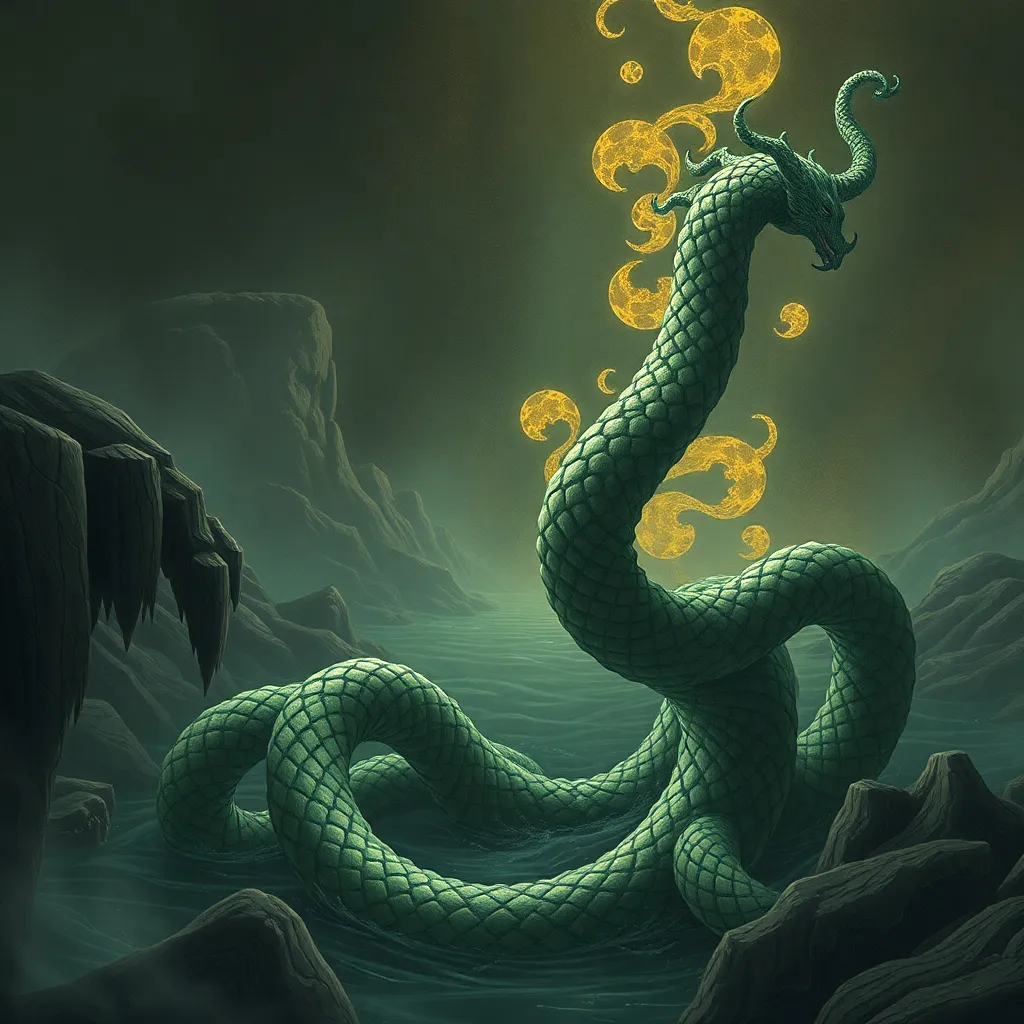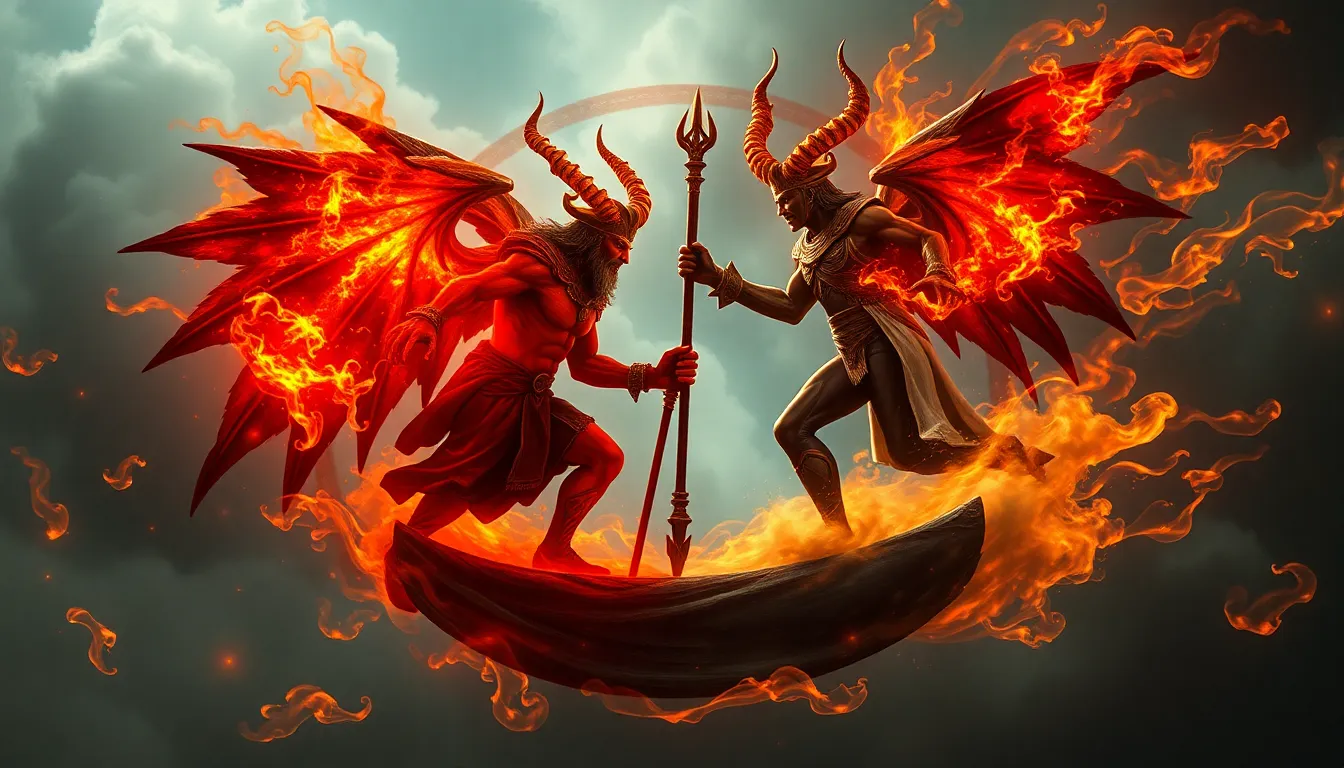The Hydra’s Curse: Examining the Legacy of the Monster in Greek Literature and Art
I. Introduction
The Hydra, a multi-headed serpent-like creature from Greek mythology, has captivated the imagination of artists and writers for centuries. Known for its ability to regenerate two heads for every one that was cut off, the Hydra symbolizes the challenges and adversities that one must face in life. This article delves into the significance of the Hydra in literature and art, exploring its legacy and various interpretations throughout history.
II. The Myth of the Hydra
A. Origin and background of the Hydra in Greek mythology
The Hydra was said to reside in the swamps of Lerna, a region in the Peloponnese. According to myth, the creature was born from Typhon and Echidna, two formidable monsters. Its most famous tale is intertwined with the legendary hero Heracles (Hercules), who faced the beast as part of his Twelve Labors.
B. The Twelve Labors of Heracles: The significance of the Hydra’s defeat
The second of Heracles’ Twelve Labors was to slay the Hydra. This task was not only physically daunting but also symbolized a battle against chaos. Each time Heracles severed one of the Hydra’s heads, two would grow back in its place, representing the idea that some problems multiply when confronted directly. With the help of his nephew Iolaus, who cauterized the necks of the severed heads, Heracles ultimately defeated the creature, showcasing the importance of collaboration and strategy in overcoming challenges.
C. Symbolism of the Hydra in the context of Greek mythology
The Hydra serves as a powerful metaphor for the struggles of life. It embodies the concept of resilience, as it continually regenerates, and highlights the complexities of overcoming adversity. The myth reflects the human condition, where difficulties can seem insurmountable, yet with persistence and ingenuity, one can prevail.
III. The Hydra in Ancient Greek Literature
A. Depictions in epic poetry (e.g., Homer, Hesiod)
The Hydra appears in various ancient texts, including works by Homer and Hesiod. While not always the primary focus, the creature is often referenced as an embodiment of evil that heroes must confront. These references contribute to the overall narrative of human struggle against formidable foes.
B. The Hydra in tragedy and comedy (e.g., works by Euripides and Aristophanes)
In tragedy, the Hydra symbolizes inner turmoil and chaos. Euripides often employed monsters like the Hydra to represent the protagonists’ psychological battles. Conversely, in comedies by Aristophanes, the Hydra is sometimes portrayed in a more lighthearted manner, serving as a comedic foil to human folly.
C. Analysis of the Hydra’s role as a metaphor for chaos and adversity
Throughout Greek literature, the Hydra represents not just a physical threat but also the chaos of life itself. It serves as a reminder that challenges can multiply, and overcoming them requires not just strength but also wisdom and teamwork.
IV. The Hydra in Ancient Greek Art
A. Representation in pottery and sculpture
The Hydra has been depicted in various forms of ancient Greek art. Pottery often features illustrations of Heracles battling the Hydra, showcasing the dramatic moments of the myth. Sculptures further explore the creature’s grotesque features, emphasizing its fearsome nature.
B. Iconography of the Hydra in painting and reliefs
In painting, the Hydra is often illustrated with vivid colors and intricate details, highlighting its many heads and the struggle against it. Reliefs from temples and public spaces frequently depict Heracles in heroic poses, emphasizing his triumph over chaos.
C. The artistic evolution of the Hydra’s depiction over time
As art evolved, so did the representation of the Hydra. Earlier works focused on realism, while later interpretations incorporated more stylized elements, showcasing the creature as a symbol of broader themes such as resilience and struggle.
V. The Hydra’s Influence on Later Literature
A. Adaptations of the Hydra in Roman literature
The legacy of the Hydra continued in Roman literature, where it was referenced by authors such as Ovid. The creature’s regenerative abilities were often used to illustrate the concept of eternal struggle, paving the way for future interpretations.
B. The Hydra as a recurring theme in Renaissance and modern works
Renaissance writers and artists revived classical themes, including the Hydra. The creature became a symbol of the human condition in works that explored existential questions and the nature of evil.
C. Case studies: Notable authors and their interpretations (e.g., Dante, J.K. Rowling)
- Dante Alighieri: In “The Divine Comedy,” Dante references the Hydra as a symbol of sin and vice, illustrating the regenerative nature of human flaws.
- J.K. Rowling: The Hydra appears in the “Harry Potter” series, representing the complexity of evil and the challenges faced by the protagonists.
VI. The Hydra in Contemporary Culture
A. The Hydra as a symbol in modern films and television
Modern films and television shows frequently incorporate the Hydra as a symbol of overwhelming challenges. Its appearance often signifies a pivotal moment where characters must confront their fears and chaos.
B. The continued relevance of the Hydra in video games and popular media
In video games, the Hydra is often depicted as a formidable boss character, requiring players to demonstrate skill and strategy to overcome it. This interactive representation reinforces the Hydra’s symbolic role as a challenge to be vanquished.
C. The Hydra’s representation in contemporary art and literature
Contemporary artists and writers continue to draw on the Hydra myth to explore themes of resilience and chaos. Its adaptability as a symbol ensures that it remains relevant in discussions about human experience and struggle.
VII. Symbolism and Themes Associated with the Hydra
A. The Hydra as a representation of resilience and regeneration
The Hydra’s ability to regenerate serves as a powerful metaphor for resilience in the face of adversity. It reminds us that challenges can lead to growth and transformation, echoing the human experience of overcoming obstacles.
B. The duality of the Hydra as both a destructive force and a source of inspiration
While the Hydra is often viewed as a destructive force, it also inspires creativity and ingenuity. Its complex nature invites interpretations that span the spectrum from fear to admiration, making it a multifaceted symbol.
C. Psychological interpretations of the Hydra’s curse in modern contexts
In contemporary psychology, the Hydra’s curse can be seen as a representation of the challenges individuals face in their lives, where problems often seem to multiply. Understanding this mythological creature can provide insights into coping mechanisms and resilience strategies.
VIII. Conclusion
A. Summary of the Hydra’s impact on literature and art through history
The Hydra’s legacy in literature and art is profound, serving as a symbol of chaos, resilience, and the human struggle against adversity. Its depictions have evolved but remain rooted in the themes of challenge and triumph.
B. Reflection on the enduring legacy of the Hydra in contemporary society
Today, the Hydra continues to resonate with audiences, illustrating that the challenges we face can be both daunting and transformative. Its presence in various cultural forms underscores its relevance across generations.
C. Final thoughts on the relevance of mythological monsters in understanding human experience
Monsters like the Hydra allow us to explore the complexities of the human experience. They serve as metaphors for our fears and struggles, offering valuable lessons about resilience, cooperation, and the eternal battle against chaos.



